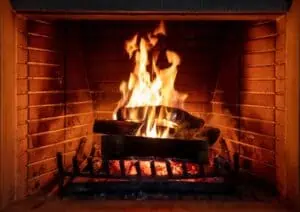How to Vent a Gas Fireplace Without a Chimney?
You can use a gas fireplace without a chimney in some cases, but it can be challenging to find a solution. It’s especially true if you don’t have an existing masonry chimney with an exhaust flue to vent the fire’s waste air.
(Looking for “installing gas fireplace“? Contact us Today!)

Luckily, there are ways to make sure that fumes don’t get back into your home even if you have a gas fireplace without a chimney. Here are a few options:
Direct Venting
A direct vent is the preferred option for all gas fireplaces. It eliminates the need for a chimney and also provides more efficient heat transfer from the fire into your home.
This type of vent is usually installed on the exterior of your home, either through the roof or through a wall. The vents will funnel the smoke and combustion gases out of your house through an external pipe system.
It’s important to note that the vents should be inspected once or twice a year, and they should be cleaned as needed. If you do decide to install a direct vent, it’s always a good idea to consider using a carbon monoxide monitor so that you can be sure your home is safe and breathable.
Side Walls
The most common way to vent a gas fireplace is through side walls, which can be done with a small amount of work. The key is to be sure that the walls are free of obstructions so that you can easily vent the fireplace.
You should also consider adding a damper to your side wall, which will help to keep the fireplace’s heat inside of your home while you’re not using it. Using a damper also helps to control the amount of smoke that gets out of your fireplace, so you can keep it from getting out of hand and creating a bad smell in your home.
If you choose a side wall method, it’s a good idea to add some insulation around the flue pipe. This will ensure that your side wall doesn’t lose its heat and it will help to protect your home against the cold weather.
Natural Venting
One of the most popular and affordable methods for venting a gas fireplace is by using natural ventilation. This is a simple approach that will allow the air in your home to circulate naturally and will remove the air that comes out of the fireplace, thereby making your home more energy efficient and healthier for you and your family.
In addition, this natural ventilation is cheaper than a direct vent, and it’s also less hassle to install as well!
Vented Logs
A vented gas fireplace is a great option for those who want to have a log fire in their home but don’t want to deal with the mess that comes with burning wood. They can be fueled by either propane or natural gas, and they are federally tested to make sure that there isn’t any danger from carbon monoxide or other gases that are released during the fire’s combustion.

